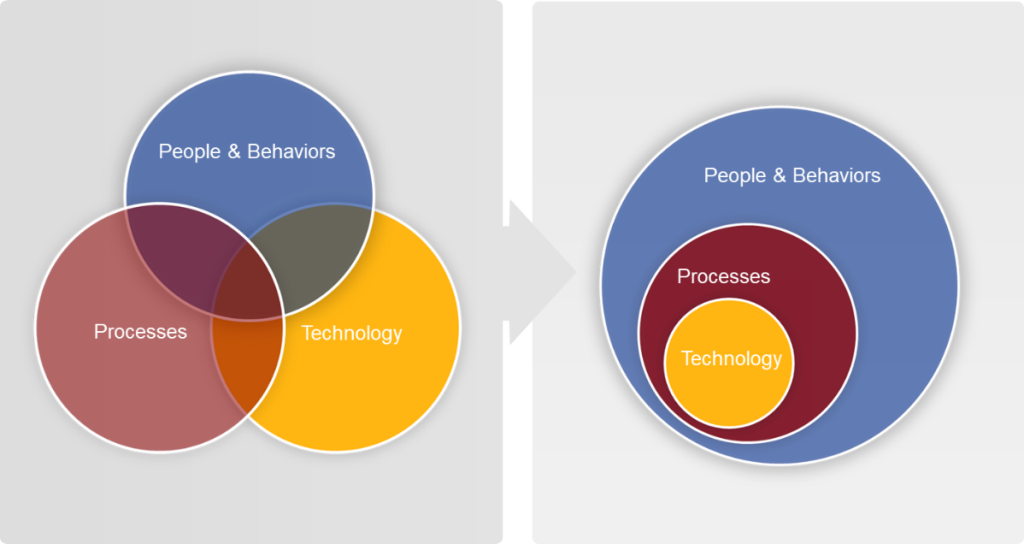David Zhao is managing director of Coda Strategy, an independent consultancy that works with digital leaders to execute business vision through technology strategy. David has guided numerous organizations through the strategic design and implementation of large, successful digital transformation programs. He focuses on bridging the gap between business needs and technical implementations, by designing high-performing programs that transform business lines. He is a hands-on, former leader at Deloitte Digital. David earned his MBA and MS in Computer Science from UT Austin. He has extensive continuing education in analytics and data science.
Recently, in an exclusive interview with Digital First Magazine, David shared his career trajectory, roles and responsibilities as Managing Director at Coda Strategy, insights on the future of AI, personal hobbies and interests, one word that describes him best, future plans, pearls of wisdom, and much more. The following excerpts are taken from the interview.
Hi David. Please tell us about your background and areas of interest.
I’m a career IT management consultant. I’ve spent time at large consulting firms, such as IBM, Capgemini, and Deloitte. I’ve also spent time on the professional services side of software companies. Now I run Coda Strategy, an independent consultancy that works directly with clients on the same types of digital challenges that I solved at the large consultancies.
My areas of expertise fall within digital business strategy. We focus on enterprise architecture, data & analytics, and then artificial intelligence. Specifically, we explore the use of – and apply — technology to challenging business problems.
Brief us about your roles and responsibilities as Managing Director at Coda Strategy.
Coda Strategy is an independent consultancy. We work on the same types of business challenges in digital strategy that large consulting firms provide services for.
So, traditionally, companies have relied on large consulting firms to address their most challenging business problems. And over the decades, those large traditional firms have grown in prestige and size, as they expanded their capabilities and industries.
The traditional consulting model has remained unchanged during this time. Experienced senior leaders with strong relationships guide teams of smart, talented employees who learn from their leaders how to solve clients’ most challenging problems.
However, this model can leave some clients feeling overserved.
First, most companies now employ former consultants who are increasingly sophisticated at buying services and defining scope. This leads to fewer open-ended projects and more specialized initiatives.
Second, cost pressures, especially during economic downturns, have led companies to look for cost-effective alternatives where possible.
Third, sometimes a well-defined problem requires just one expert rather than a team of smart generalists.
As a result, independent consultancies such as Coda Strategy have carved out a niche working directly with those clients who feel overserved by traditional consulting firms.
So, we’re very much a substitute for traditional consulting, not a direct competitor, specifically in areas like enterprise architecture or data strategy.
With disruption and transformation being everywhere, what are the challenges you see facing your sector right now? How can we overcome those challenges?
In our work, business challenges are good! Without business challenges, we would be out of work. Fortunately, that’s not the case.
The biggest challenges that we see are either figuring out where to begin with digital or figuring out, given a finite amount of money, how to place investments where they can generate the most value.
This often becomes a challenge because there are egos and vested interests. Say at a large company, the CMO wants to revamp the customer experience, the CFO wants to cut customer service costs, and the CIO wants to invest in new automation tools.
What do you do? Well, you can’t do everything. So, what makes the most sense? Maybe it’s none of the above. Maybe the best course of action is to invest in a new customer data platform, that would help enhance the customer experience, reduce customer service costs, and require new data automation tools.
But nobody wants to support that new data platform because it’s not anyone’s pet project. So, then it becomes an influence problem, rather than a technology problem, because we need executives to understand that there are building blocks that are required to achieve their end goals.
In your opinion, what are the imperative qualities that our forward-looking leaders must adopt to transform businesses for the future?
There are three key traits that define digital leadership for me.
First is the ability to drive digital change. For example, being able to drive a digital transformation, making others enthusiastic about digital transformation, and most importantly, knowing what it takes to execute digital transformation.
Second is being able to manage choice overload. From chatbots to social media, to the cloud, smart devices, and crypto, there is no shortage of options for digital distraction. Effective digital leaders can see the realm of possibilities, quickly narrow down to a few top choices, and then make a data-driven decision.
Third, it’s key to be able to develop calmness and the ability to motivate others. Calmness determines how employees perceive a manager’s leadership. Motivating others is a core leadership skill. It is correlated with the ability to help others cope with the stress of digital transformation.
So, those are the three keys to digital leadership for me.
What, personally, has allowed you the success you have had in the role of a digital transformation leader?
There’s a standard personality test called the Big 5 or OCEAN. Think of it as Myers Briggs, except that it’s based in science, unlike Myers Briggs.
I would point to two personality traits: a high openness to experience coupled with high conscientiousness.
High openness means that you’re imaginative, curious, and generally open to new ideas. High conscientiousness means that you’re responsible, dependable, and goal oriented.
Consulting clients appreciate high openness, because it means that you’re actively listening to what they want to do, how they feel, and how they approach business challenges. Then, they appreciate high conscientiousness, because if you agree to help them, then it means that you’re willing to follow through, stick to a plan, have those difficult conversations on their behalf, and generally achieve results on their behalf.
How would you define AI? How do you expect AI to develop in the future?
Practically, we can define AI practically as any system that simulates human intelligence, by being able to accomplish tasks or achieve goals, in a complex, uncertain environment.
We could also stipulate that the system should understand the task and the reasoning that led to the accomplishment of those tasks, but that leads into a philosophical discussion. So, we can just stick to the practical definition for now.
AI is at an interesting inflection point. Gen AI has taken the world by storm. To many, it is the first, real practical application of AI. ChatGPT hit 1 million users in 5 days. In contrast, it took Facebook and Instagram months to hit that mark.
But for companies to take advantage of AI, and really have success with use cases in a business context, they need proper digital foundations, such as cloud and data. There’s a myth that we can just bolt on AI widgets onto business applications, and they will just work. The reality is that it takes much more effort, along with a clear understanding of how different AI applications work and how to decompose challenging business problems into pieces that are addressable by AI.
What are your passions outside of work?
Well, I have two small kids, so they take up most of my time outside of work. So, my passions there are things that typical kids like to do, such as going to the park or playing board games.
I invest a significant amount of time in continuing education, such as professional certifications in cloud and data. It’s a nice wind-down activity after kids go to bed.
Lastly, I still enjoy a good food and wine pairing. That is still my biggest guilty pleasure.
One word that best describes how you work.
Driver.
At Deloitte, we used an in-house personality test called “Business Chemistry.” So, “driver” is my Business Chemistry profile. Drivers are logical, quantitative, focused, competitive, experimental, and deeply curious. Above all, we like to get stuff done.
Which technology are you investing in now to prepare for the future?
For me, there are four pillars that I focus on: cloud, data, AI, and then gen AI.

Cloud is foundational for everything we do in technology these days. Just as accounting is the language of business, cloud has become the language for digital. So, it’s imperative to have a strong cloud foundation to understand anything else in technology.
Second, everyone wants to get into AI, but nobody wants to focus on the proper data foundations. There’s a great catchphrase that I like: Everybody is ready for AI except your data. So, having a strong data foundation, with a strong data strategy and data governance, that’s built on top of a strong cloud foundation, is critical for today’s businesses.
Finally, with AI and gen AI, we’re only scratching the surface of the art of the possible. Gen AI will be incredibly disruptive to traditional technology operations in the coming years. But, to get the most value out of gen AI, companies will need a solid AI foundation, which needs to be built on a solid cloud and data foundation.
What is your biggest goal? Where do you see yourself in 5 years from now?
Professionally, my goal is to continue to grow Coda Strategy as an independent consultancy. Being a strategy firm is both a blessing and a curse. It’s a blessing because the business problems are interesting, and the work is challenging and engaging.
It’s a curse because every strategy problem is different. If we could do the same thing for every strategy problem, then everybody would just do that, and it would no longer be strategic. However, that means the skillset required for every initiative is different. So, it’s hard to scale, when it’s hard to predict what we’ll need to do.
As the firm continues to grow and mature, I think in 5 years, we’ll have more consistency to what we offer, and, as a result, more consistent expectations around skillsets.
Many companies are currently undergoing digital transformation processes – what are your tips on a successful digital transformation?
It’s cliché, but always worth restating: Digital transformation involves transforming people, processes, and technology.
However, sometimes we make the mistake of thinking that those areas are distinct, as if we can run a separate people workstream, processes workstream, and technology workstream, on a digital transformation. And then, we just worry about the overlap of the workstreams, and we’re good.
That’s a mistake. True digital transformation looks something more like concentric circles, with technology at its core, processes surrounding those technology decisions, and then finally new behaviors adapted to the new processes.

Stated differently, we need to change behaviors for digital transformation to be successful. Old behaviors + new technology just equals expensive old behaviors.
So, ultimately, digital transformation is a people experience transformation problem. If we focus just on technology, then all we have is an expensive IT science project.






